Anybody can buy handcuffs. It only takes a few bucks and a criminal mind to turn this simple item into a mean of terror against a person whose freedom is suddenly compromised.
Even so, rememeber that handcuffs are employed for temporary restraint. Which means that if you are left alone in handcuffs, you can escape. If you don’t know how to do it, then this article is exactly what you need.
Keep reading!
Briefly:
- Freeing yourself from handcuffs can save lives or get you a court-appointed lawyer. Exercise sound judgement as to when to use and when not to use this skill.
- After learning about restraint escape kits and how to carry them, how to use restraint escape gear is the next skill you should train.
- If SEALs can be captured, so can you!
- More than anything else, executing a restraint escape takes practice.
Clearly, the decision to use this skill is very situation-dependent. As is the case with many of the survival skills, freeing yourself from handcuffs could potentially save lives, cost them or worse, so be sure you understand and carefully weigh the potential consequences before attempting to do so.
“I don’t think you should teach people to escape double-locked handcuffs because criminals only single lock them and LEO’s double lock them.”
LEO (Law Enforcement Officer)
I disagree. The idea that less information makes people safer is a slippery slope.
Whether software, hardware, safety equipment or security equipment, it is better to expose security flaws and limitations to the average consumer, voter or shareholder so they can be corrected, making the things that protect us more effective.
It is reckless to assume that anyone who might illegally restrain you must be stupid and uneducated.
SEALs are Issued Bobby Pins
I have heard a lot of big talk and bluster from self-proclaimed death machines about how they will never be taken prisoner or walk away from a fight.
Do they impress you? Put the fear in you? Interest you? Me either … I guess death machines must bore their enemies to death.
One day, I noticed that a request for proposal for SERE kits for one of the SEAL teams included a lot of the same gear that I carry, including bobby pins. Why carry bobby pins? Because they are ubiquitous, don’t scream “restraint escape tool!”, easy to hide and easy to improvise serviceable restraint escape tools from.
In trained hands, they can shim handcuffs, pick handcuffs, act as a reach tool for handcuff keys, pick locks, tension locks, push a friction saw past tight flex cuffs or duct tape and have many more restraint escape applications.
Before you decide you are too hard or too righteous to ever possibly need to escape, consider this: If SEALs can be captured, you can too.
3 Second SEAL Test Will Tell You If You’ll Survive A SHTF Situation
SEALs carry tools to execute a last-ditch escape plan. What do you carry?
Anyone can Buy Handcuffs
One does not need to be a law enforcement officer to buy handcuffs. All they need is a few bucks of credit and a heartbeat.
Under the circumstances, you are wrong thinking that you’re safe!
Still some people are more prone than others to get into this kind of situations.
Who Are People with High Risk of Illegal Restraint?
Violent Crime
While many Americans think that the risk of restraint-related crime is too low to justify learning to escape, the US is only ever one congressional vote away from becoming the newest banana republic and one cyberattack, EMP, financial collapse or Black Swan away from sliding back to third world status.
Also, when assessing risk, considering the probability of occurrence, but ignoring your exposure to the risk is a recipe for disaster.
Where I live in the US, the rate of violent crime is very low, but the fact that so many people own or carry firearms helps keep it that way. In Brazil, it’s just the opposite. Home invasion and related crimes involving illegal restraint are on the rise, with groups even crossing state lines to perpetrate crimes. It can happen to you.
International Travel
Kidnapping for ransom, lighting kidnappings and politically-motivate crimes involving illegal restraint are significant risks in some parts of the world, especially for Americans. I spend months at a time in parts of Brazil and travel to other countries where illegal restraint is a significant threat, and often precedes homicide.
Journalists, Reporters, Media
With high visibility, comes elevated risk.
Sex & Stalking-related Violent Crimes
Some people just won’t take, “Hell, no!” for an answer and believe it or not, it doesn’t just happen to women.
I will never forget how a 6’4” man’s man bawled like a baby as he tried to recount the experience of explaining to his son how a group of bikers abducted him from a gas station, drove him outside of town in a van and sexually assaulted him repeatedly.
If criminals try to restrain you during a crime and transport you from a populated area, your chances of survival drop to single digits, whereas 6 in 7 victims shot with a handgun in a US city survive. You may be much better off making a run for it in this situation. Escaping your restraints may position you to fight and/or run, affording you your best shot at survival.
Military
Whether working overseas or on active duty, military personnel are high value targets for politically and religiously-motivated crimes.
International Aid Workers
Too often victims of “wrong place, wrong time.”
Celebrities
Don’t laugh, the internet has made it possible for the average person to reach a worldwide audience. It is also a dream come true for stalkers.
How Handcuffs Work
Essentially the same basic handcuff design most widely used in the USA has changed very little in over 100 years. It is so widely used that changing it would be expensive and create a huge logistical headache.
Most arrestees are cooperative, so leadership does not want to deal with said headache and does not typically value officer safety very highly. They whitewash over the fact that the standard handcuff design has security vulnerabilities with SOP, stating that standard handcuffs should be used only to secure prisoners temporarily while an officer is present.
Since departments don’t typically issue high security handcuff for situations that fall outside this rule, there are plenty of situations where officers do not have other tools at their disposal. These factors make standard handcuffs both widely used and relatively easy to escape.
Standard handcuffs have a single strand with ratchet teeth that pivots on a that bisects both arms of a double strand. The single stand interlocks with teeth on a locking bar. This feature makes handcuffs simple to apply and adjustable.
Once the single strand is closed around the wrist and its ratchet teeth engage the opposing ratchet teeth on the locking bar (normally obscured by the cheek plates), the single stand will not open. In this condition, the handcuffs are single locked.
To double lock the handcuffs, the double locking bar is engaged by depressing a recessed detent pin with a short push pin, called a stem, located on the top of the key. Once the double locking bar is engaged, the handcuffs are double locked. In this condition, the handcuffs are secure and cannot be tightened further.
Unlocking Handcuffs
To unlock standard handcuffs, simply Insert the handcuff key and turn it counter-clockwise, as this disengages the double locking bar. Turning the key clockwise and maintaining pressure disengages the teeth on the locking bar from the ratchet teeth on the single strand, enabling the single strand to open.
Caution! These techniques are best practiced with a key handy and a second responsible party nearby to aid in removal of handcuffs if necessary. If handcuffs are over-tightened for an extended period, they can cause nerve damage!
Standard Counter-picking Features
The keyway has a post protruding from its center which make it difficult to insert tools into the keyway to manipulate the locking bars, but allows handcuff keys to seat because the
To further thwart attempts to open handcuffs by picking, the double lock bar is often replaced with two thinner double locking bars so if a tool that matches the shape of a handcuff key is used to manipulate the double lock bar, but is too thin, the tool will only disengage one of the two locking bars at a time.
Methods & Tools for Defeating Handcuffs
Today, the cultural norm is to solve problems with money. Need a tool? Buy it online. To me, survival involves solving problems without money, stores or the internet. If you really want to buy a specific tool, I’m sure you can get someone to sell you on (including me).
But I strongly suggest that you start making basic restraint escape tools yourself and save your money for the more specialized tools, like a cutaway handcuff with one of the cheek plates replaced with plexiglass. They are not perfect for practice as the cheek plate is thicker than actual handcuffs, but it will enable you to manipulate the internal parts and understand how they work.
Not only will you save money making tools, but you will learn a lot and build a skill set that cannot be easily discovered taken from you.
You can make escape and entry tools from any material that is sufficiently strong and ductile, including aluminum cans, bobby pins, wiper blade, feeler gauges, street sweeper bristles, water bottles, cordage, tubing, lip protectant and any number of other bits of trash that litter areas inhabited by humans.
Keys
If handcuffed effectively from the point of view of preventing escape, the palms of your hands will be facing away from the keyways and the handcuffs double locked. This position and the fact that the handcuffs are double locked makes it very difficult for anatomically normal folks to reach the keyways and movement is further restricted if hinged or rigid handcuffs are applied.
Not all police departments use this method though. Some departments handcuff with palms together to prevent nerve damage if the suspect struggles or the handcuffs are not removed in time.
The solution is to use an extension or reach tool to extend the reach of a concealable handcuff key. I explained the pros and cons of different models of keys in a prior article.
A reach tool that I like that can be used with many key designs is the bobby pin, but any number of tools can serve the purpose. A short length of silicone tubing (like I wear on my necklace) can be useful with some models and can be employed to pad your fingers as you bend metal.
Necklace designs, keys and ways to conceal them in the articles linked in the BLUF section.
Picks
Modified Mini Binder Clip Handle
The modified mini binder clip is one of my favorite ways to open handcuffs. I carry mini binder clips as money clips for cash. I prefer to distribute cash on my person instead of preparing it for theft by gathering it in a single, easy-to-find wad. I also find it handy to separating foreign and domestic currency. Now I have plausible deniability should a loose binder clip handle be discovered on my person … it must have fallen off a clip I was using as a money clip.
If you can find binder clips of the right dimensions that’s great, you won’t need to modify them. If you can’t, the modifications are difficult to notice, especially to someone without a lens or an idea of what they are looking for.
Shorten the length of the bend of the binder clip handle that will be used as the tooth of a handcuff key to 2.80mm including the diameter of the wire. The diameter of the wire should be reduced to 0.85mm to ensure that it can pass feely between the keyhole in the cheek plate and the security pin. Modifications can easily be performed with a wire cutter and a diamond jeweler’s file, by rubbing it on a concrete or stone surface of appropriate grit or with a diamond cutoff disc for a rotary tool. The detail-oriented can even re-finish the clip to avoid detection.
To use, bend the clip open. Work the “tooth” into the keyway and use it to sweep and/or stab open the double locking bar(s) in a counter-clockwise direction and then the locking bar in a clockwise direction and … “Presto!” you just opened double locked handcuffs without a key.
Hook Pick
A medium or so hook lock pick can be used to manipulate the locking bars as with a mini binder clip handle only you will be pushing at an angle to manipulate the locking bars as opposed to sweeping. Give it a try.
Bobby Pin
Same deal basic idea. The technique can be sweeping or pushing depending on how you bent the bobby pin. Believe it or not, SERE shops online actually sell “pre-bent” bobby pins, but if you lack the wherewithal to bend a bobby pin, you aren’t realistically going to be escaping anything. Better to retreat to your safe space and trust in the mercy of captors.
Shims
Shims are tiny, easy to conceal and can open handcuffs quickly and quietly, if the handcuffs are only single locked. Shimming will not open double locked handcuffs because the double locking bar prevents downward travel of the locking bar, which is necessary to disengage the teeth enough to wedge a shim between the two sets of teeth.
Shims can be purchased inexpensively or improvised from hair clips, bobby pins, cotter pins or similar objects. Just understand that many models currently sold will not open even standard handcuffs featuring narrow single strands and ratchet teeth, like UZI brand and some generic cuffs sold at military surplus stores without modification.
I test every new shim I see hit the market and measure them with a caliper. Most are too wide to reliably open cheap handcuffs. (Shim manufacturers take heed!) Many shims need to be modified by narrowing the width.
We are not talking huge measurements here, just a fraction of a millimeter, so a narrow shim can open handcuffs with a wider single strand just fine, but the opposite is untrue. Unfortunately, that fraction of a millimeter of extra width is the difference between a shim not working or working.
To shim handcuffs, insert the shim beneath the teeth on the single strand, where it enters the handcuff body. Wedge the shim between the single strand teeth and the locking bar teeth, maintaining constant (stabbing) pressure on the shim, pushing it in between the two sets of teeth. Maintain pressure once in place and simultaneously tighten the single strand, taking care not to over-tighten.
One ratchet click should be enough to seat the shim between the teeth! If the shim does not seat in a couple of clicks, start over and do not risk nerve damage in training! As the single strand is tightened, it forces the teeth to disengage for an instant before the locking spring slams them back shut. In this instant, the shim can be wedged between the teeth, preventing them from engaging. Once seated, the shim can then travel a couple of centimeters inside the handcuff body as the single strand is tightened and the single strand then be opened since its teeth will slide along the shim instead of engaging the teeth on the locking bar.
Slipping Handcuffs
Human anatomy varies a great deal. Some folks have wrists that are larger than their hands, flexible hands or muscular forearms. All the preceding anatomical features aid in slipping handcuffs. The higher handcuffs are applied on the forearms, the easier it is to slip them.
Flex your forearm muscles discreetly as handcuffs are applied. When your muscles are relaxed, your forearms will become thinner. Even if you are not able to slip the cuffs at this point, your range of motion should be increased.
Applying handcuffs over long sleeves or coat sleeves increases range of motion and applying a little petroleum jelly, white petrolatum, lip protectant or even butter or grease from food can act as a lubricant and aid in slipping handcuffs.
Breaking Handcuffs
Breaking the Chain
It is possible to break the chain of most models of standard handcuffs by pulling the chain taught and then twisting both wrists so that the cheek plates bind on one another, creating a fulcrum. Employ pressure at the rivets that bind the single strand to the double strands, using the strands as levers to gain sufficient mechanical advantage to snap the chain.
The downsides are that practicing this technique is on the expensive side and you will still want to remove the handcuffs.
Cutting the Single Strand
Do not cut the single strand near the rivet! If you do, the ratchet teeth may prevent the single strand from opening. Cut it closer to where the single strand enters the handcuff body. That way it can open, pivoting on the rivet.
The Secret to Restraint Escape
The secret recipe for effective restraint escape (and most other survival skills) is simple. Whichever method or tool you choose,
…more than the best instructor on the planet,
…more than raw talent or genius,
…more than sexiest or best tools,
… effective restraint escape requires practice and dogged persistence! The others may help a little, but practice and persistence mean the difference between proficiency and failure.
Avoid This Too Common Mistake
Practice. As you do, start with the models of handcuffs you are likely to need to escape from.
A huge mistake a lot of folks who live the tactical lifestyle often make is practicing with only well-maintained, high quality handcuffs they own or are issued as opposed to models of handcuffs criminals are more likely to use.
If you carry handcuffs, you should be experienced in escaping from the handcuffs you carry and carry a spare key attached to a reach tool, but a street criminal perpetrating a home invasion to get money to score drugs is more likely to use a pair of cheap army surplus store handcuffs that have been rusting behind the seat in his truck for the past 5 years than a pair of well-oiled high-end handcuffs.
Practice with both! This is how you will be able to make the smart move when your life would be on the edge!
This article has been written by Cache Valley Prepper for Survivopedia.


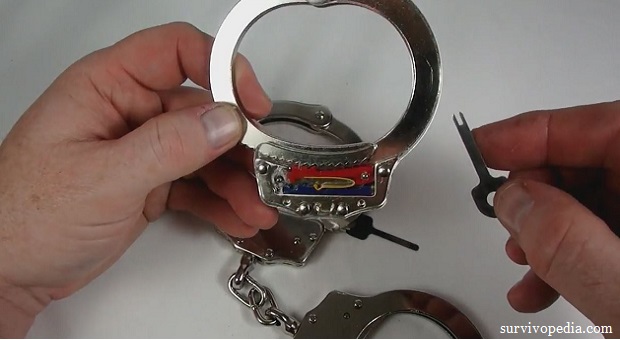
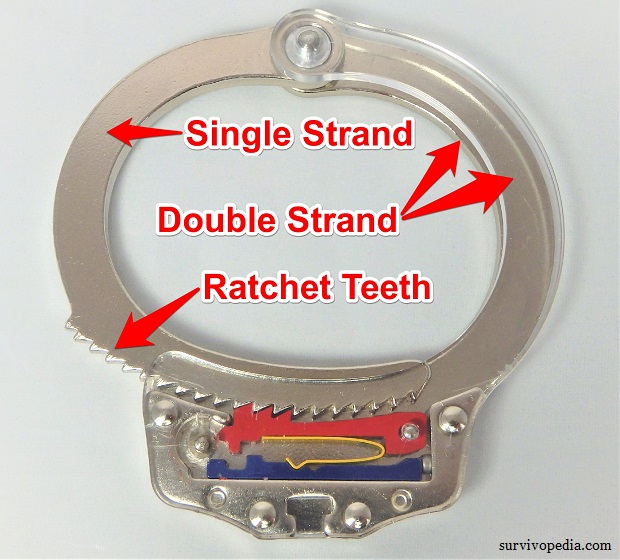
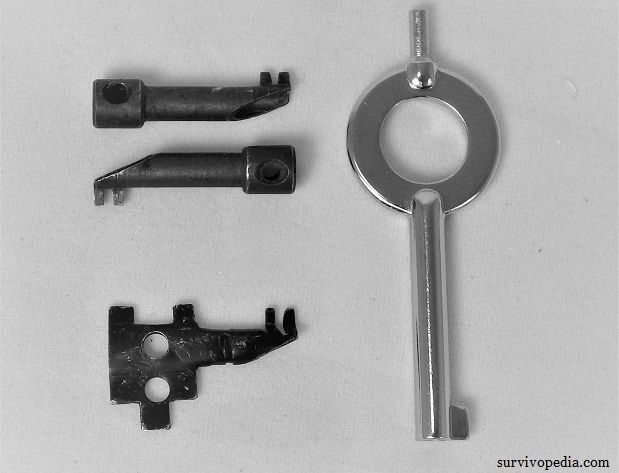
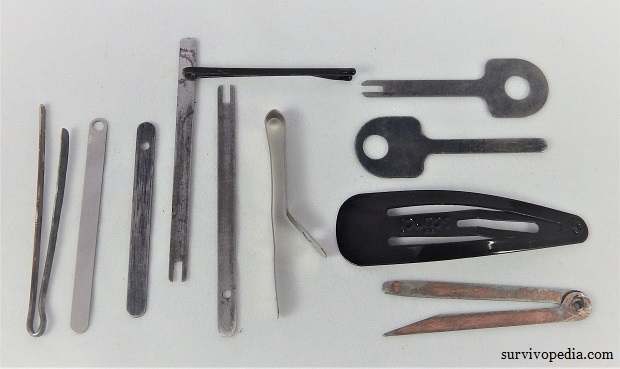




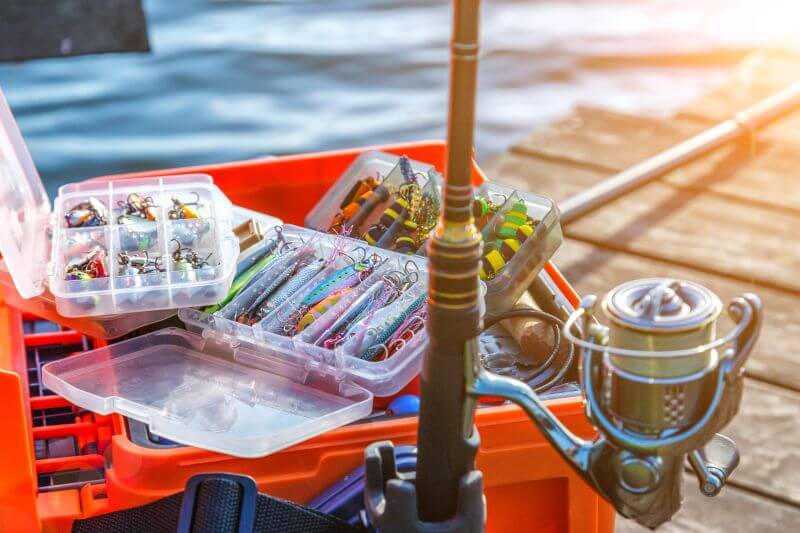


Glenn Trombly | November 16, 2017
|
you need to proof read this article. there are a lot of holes in your text
Pingback:Dressed to Survive: The Rules Of Survival Clothing & Accessories | Survivopedia | January 2, 2018
|